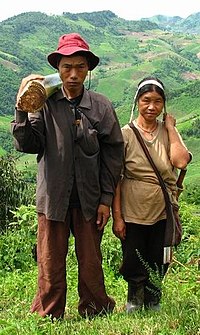
Cognitive development: Looking for perceptual awareness in human infants
Sign Up to like & getrecommendations! Published in 2022 at "Current Biology"
DOI: 10.1016/j.cub.2022.02.045
Abstract: The extent to which young human infants are conscious, in the sense of being perceptually aware of their environment, has been long debated. A new study has revealed that infants do exhibit a key signature… read more here.
Keywords: awareness human; perceptual awareness; cognitive development; development looking ... See more keywords

Socially-relevant Visual Stimulation Modulates Physiological Response to Affective Touch in Human Infants
Sign Up to like & getrecommendations! Published in 2021 at "Neuroscience"
DOI: 10.1016/j.neuroscience.2020.07.007
Abstract: The human tactile system is known to discriminate different types of touches, one of these termed 'affective touch', is mainly mediated by slow conducting tactile afferents (CT fibres), which are preferentially activated by slow and… read more here.
Keywords: affective touch; socially relevant; relevant visual; stimulation ... See more keywords

Human infants can override possessive tendencies to share valued items with others
Sign Up to like & getrecommendations! Published in 2021 at "Scientific Reports"
DOI: 10.1038/s41598-021-88898-x
Abstract: Possessiveness toward objects and sharing are competing tendencies that influence dyadic and group interactions within the primate lineage. A distinctive form of sharing in adult Homo sapiens involves active giving of high-valued possessions to others,… read more here.
Keywords: tendencies share; override possessive; possessive tendencies; human infants ... See more keywords

Immunogenicity Comparison of a Next Generation Pneumococcal Conjugate Vaccine in Animal Models and Human Infants.
Sign Up to like & getrecommendations! Published in 2019 at "Pediatric Infectious Disease Journal"
DOI: 10.1097/inf.0000000000002522
Abstract: BACKGROUND Evaluation of a pneumococcal conjugate vaccine (PCV) in an animal model provides an initial assessment of the performance of the vaccine prior to evaluation in humans. Cost, availability, study duration, cross-reactivity and applicability to… read more here.
Keywords: pneumococcal conjugate; animal models; human infants; conjugate vaccine ... See more keywords

How Does a Robot Develop Its Reaching Ability Like Human Infants Do?
Sign Up to like & getrecommendations! Published in 2018 at "IEEE Transactions on Cognitive and Developmental Systems"
DOI: 10.1109/tcds.2018.2861893
Abstract: In this paper, we address the issue robots developing a reaching ability, as human infants do. Specifically, a novel infant-inspired framework is proposed based on recent findings that the emergence of reaching is the product… read more here.
Keywords: framework; human infants; robot develop; reaching ability ... See more keywords

Babbling in a vocal learning bat resembles human infant babbling
Sign Up to like & getrecommendations! Published in 2021 at "Science"
DOI: 10.1126/science.abf9279
Abstract: Babbling bats A notable aspect of language development in humans is the babbling stage. During this time, toddlers make a range of specific sounds as they practice and imitate adult speech. Humans are not the… read more here.
Keywords: bat; human infants; babbling human; bat pups ... See more keywords

Perception of an object’s global shape is best described by a model of skeletal structure in human infants
Sign Up to like & getrecommendations! Published in 2022 at "eLife"
DOI: 10.7554/elife.74943
Abstract: Categorization of everyday objects requires that humans form representations of shape that are tolerant to variations among exemplars. Yet, how such invariant shape representations develop remains poorly understood. By comparing human infants (6–12 months; N=82)… read more here.
Keywords: best described; skeletal structure; human infants; described model ... See more keywords